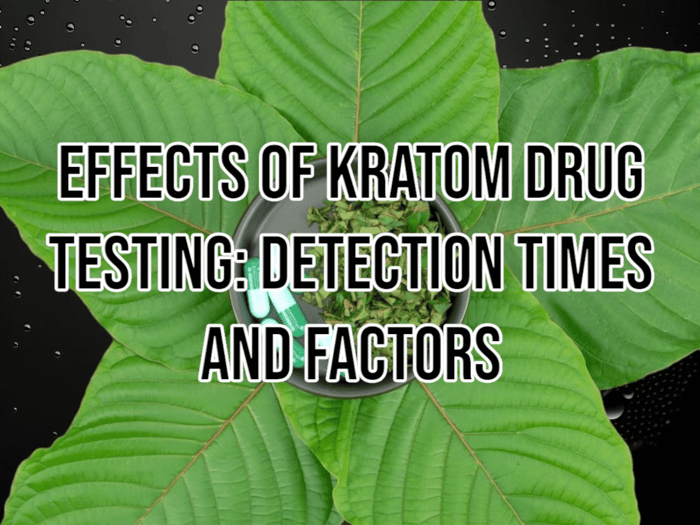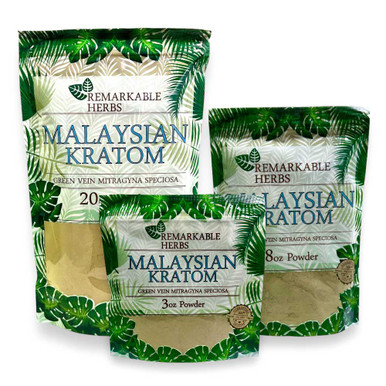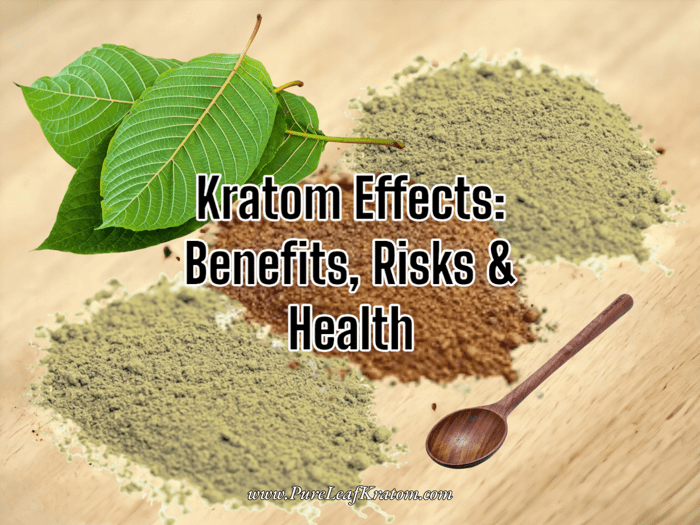
Effects of Kratom Drug Testing: Detection Times and Factors
Understanding Kratom: A Comprehensive Introduction and Exploration of Its Effects
Kratom, scientifically known as Mitragyna Speciosa, is an evergreen tree native to Southeast Asia. The leaves of this tree have been used traditionally in regions like Thailand, Indonesia, and Malaysia for their psychoactive properties. They were chewed or brewed into teas, utilized for their stimulant effects, and served as a natural remedy for various ailments, including chronic pain, depression, and anxiety.
In the modern era, kratom has gained popularity in the Western world. Being easily accessible online, it is used in various forms ranging from powdered leaves and capsules to extracts and tinctures. The surge in its usage outside traditional settings has ignited widespread interest and debate around its potential benefits and risks.
Unpacking the Kratom Plant and Its Key Components
At the heart of kratom's effects are two potent alkaloids - mitragynine and 7-hydroxymitragynine. Together, they contribute the psychoactive properties that make kratom so unique. Although mitragynine is the more abundant of the two, 7-hydroxymitragynine is significantly more potent, having a stronger affinity for the opioid receptors in the brain.
When ingested, these alkaloids initiate a cascade of effects, mainly stimulating the mu-opioid receptors, which are the same receptors engaged by drugs such as morphine and heroin. It's worth noting, however, that kratom doesn't induce the severe respiratory depression often associated with traditional opioids, making it a potentially safer alternative for managing chronic pain.
Exploring The Effects and Potential Uses of Kratom
At lower doses, kratom acts as a stimulus, boosting energy levels and enhancing mood. Users often report increased sociability, alertness, and a mild euphoria. However, at higher doses, it mimics the effects of opioids creating a sedative effect linked with feelings of calm, pain reduction, and even euphoria.
Today, multitude of therapeutic uses are claimed for kratom. It's gaining attention as an alternative treatment for chronic pain, opioid withdrawal symptoms, anxiety, depression and fatigue, among other conditions. While some of these applications show promise, the scientific evidence is still scant and more in-depth research needs to be conducted.
The recreational use of kratom is also quite prevalent, with users praising its soothing and euphoria-inducing effects. However, this usage is not without controversy. Concerns have been raised about kratom's addictive potential and possible side effects, highlighting the need for awareness, understanding, and responsible use.
Bumble Bee Kratom Powder Maeng Da

$13.49
Bumble Bee Maeng Kratom Powder Da Experience the pinnacle of Maeng Da Kratom with Bumble Bee Kratom, a rising star in the Kratom industry. Their...… read more
Kratom Metabolism: The Role of the Liver and Kidneys
How Kratom is Absorbed in the Body
Absorption Pathways
Kratom, typically ingested orally, enters the body through the digestive system. The active alkaloids, mitragynine and 7-hydroxymitragynine, are absorbed primarily in the stomach and small intestine before entering the bloodstream.
Bioavailability of Kratom
The bioavailability of kratom, meaning the percentage of the ingested dose that reaches systemic circulation unaltered, is not fully known. Some studies suggest that mitragynine, the primary kratom alkaloid, may exhibit low to moderate oral bioavailability. This could be due to the significant first pass metabolism in the liver, which we will discuss in the next section.
Role of Liver in Metabolizing Kratom
Enzymes in the Liver Involved in Metabolism
The liver is the primary site of kratom metabolism. The liver cells or hepatocytes contain a plethora of enzymes responsible for metabolizing various substances, including kratom. Key players involved in the metabolism of kratom are the enzymes of the cytochrome P450 system, specifically CYP3A4 and CYP2D6.
Mechanisms of Action in the Liver
Once in the liver, mitragynine is extensively metabolized by CYP3A4 into several metabolites, including the psychoactive metabolite 7-hydroxymitragynine. This process of first-pass metabolism reduces the bioavailability of mitragynine, altering its detection time and effect in the body. This is why individual's liver function can significantly impact the metabolism rate and detection timeframe of kratom.
Role of Kidneys in Excreting Kratom
Renal Clearance and Kratom
After being metabolized in the liver, kratom and its metabolites are primarily excreted in the urine. This process involves filtration by the kidneys, where substances are removed from the blood and sent to the bladder for excretion. The renal clearance of kratom, meaning the volume of blood from which kratom is completely removed by the kidneys per unit of time, is subject to individual variation and can influence kratom detection times.
Effect of Kidney Health on Kratom Excretion
People with impaired kidney function may have slower kratom excretion rates. This delayed excretion can lead to increased detection times during drug tests and prolonged effects of the drug. Furthermore, higher concentrations of kratom may build up in the blood in individuals with poor kidney health, posing potential health risks.
Factors Affecting Kratom Detection Times: Dose, Frequency, Body Mass, and Others
Several variables can affect the detection times of kratom and its metabolites in the body. This section discusses the impact of dosage, frequency of use, individual's body mass, metabolic rate, and other factors such as hydration and pH levels in the body.
Dosage and Frequency of Use
The amount and frequency of kratom use play pivotal roles in drug detection and elimination.
Impact of Single versus Regular Usage
A single usage of kratom usually leads to quicker elimination than regular usage. Like most substances, kratom accumulates in your system if you take it repeatedly, thus the body requires more time to eliminate it. Over time, frequent kratom ingestion can result in extended detection periods as the body needs to metabolize and eliminate the build-up of kratom and its metabolites.
Dosage Levels and Detection
The higher the dose, the longer kratom tends to stay in your system. A larger amount of the drug results in more of it being available for metabolism and excretion, effectively extending the time it takes to flush out of the body.
Individual's Body Mass and Metabolic Rate
Your body's size and metabolic rate can also affect the elimination of kratom.
Effects of Body Fat and Metabolism Speed
Kratom's primary component, mitragynine, is fat-soluble, meaning it can be stored in fatty tissues. Therefore, individuals with greater body fat may retain kratom for longer periods. Furthermore, people with faster metabolic rates are typically able to eliminate kratom more quickly than those with slower metabolism.
Gender Differences in Kratom Metabolism
Some studies suggest that gender can also influence drug metabolism. Women often metabolize drugs like kratom differently than men, which may affect detection times. Further research is needed in this area to draw any definitive conclusions.
Other Potential Factors
Beyond dosage, frequency, body fat, and metabolic differences, hydration and pH levels can also play a part in kratom detection.
Role of Hydration in Excretion
Proper hydration may expedite kratom's excretion rate. Since the kidneys play a crucial role in eliminating kratom from the body via urine, drinking ample water may aid this process. However, overhydration in an attempt to flush the system or alter the results of a drug test should be avoided as it can be dangerous.
Effect of Urine and Blood pH on Kratom Retention
The pH of your urine can also impact the detection window of kratom. More acidic urine may increase the rate at which the body excretes kratom. pH levels can alter depending on diet, medication, and other health conditions. Personal pH levels are unique to each individual, thus contributing to the variability in kratom detection times.
OPMS Black Liquid Kratom Extract Shot

$12.59
OPMS Kratom Black Liquid Shot Get your day started with A whopping 375mg of Mitragyna Speciosa leaf extract produces powerful effects that last throughout the...… read more
Kratom in Urine: Detection Timeframes and False Positives
Understanding the average detection times of mitragynine and 7-hydroxymitragynine in urine is crucial for those needing to undergo urine tests. The detection times for these primary kratom alkaloids can vary widely, influenced by factors discussed earlier such as dosage, frequency of use, metabolism rate, and hydration.
Average Detection Times for Mitragynine and 7-Hydroxymitragynine in Urine
Scientific evidence outlining precise detection times for these alkaloids in urine is scarce. However, various anecdotal reports suggest that mitragynine can be detected in urine for about a week, while 7-hydroxymitragynine has a shorter detection window due to its lower concentration and faster elimination from the body.
Variation in Detection Times Among Users
Effects of Individual Metabolism: Variations in physiological processes can impact kratom detection times. Slower metabolism may extend detection, while frequent use can accumulate alkaloids, prolonging detection periods.
Typical Window of Detection
Despite the variability, a typical detection window for mitragynine in urine is often cited as up to 9 days following ingestion and potentially shorter for 7-hydroxymitragynine. However, this should be regarded with caution as individual factors can significantly influence these times.
Incidents and Causes of False Positive Results
False positive results in urine drug tests can occur due to the detection of compounds that are structurally similar to those being tested. In the context of kratom, it's important to note that while it has opioid-like effects, it doesn't produce the same metabolites as traditional opiates and shouldn't cause a false positive for these substances.
Common Substances Causing False Positives
Despite this, certain medications, and even some foods, can potentially cause false positives for other substances in urine drug tests. For example, quinolones (a type of antibiotic), and dextromethorphan (found in some cough medicines) can cause false positives for opiates. Always be sure to disclose any medications or substances you have recently ingested when taking a drug test.
Best Practices to Avoid Mistaken Results
To avoid misconceptions and possible false positives, it’s vital to use a reputable lab with robust testing protocols. While a screening test may initially show a false positive, more specific confirmation tests, such as gas chromatography-mass spectrometry, can help to clarify and confirm the results.
Advances in Testing Techniques
Technological advancement in urine testing has greatly improved detection of substances including kratom. Modern techniques are becoming more accurate, reliable, and capable of detecting a wider range of substances, including the specific alkaloids found in kratom.
Technological Progress in Urine Testing
Presently, liquid chromatography coupled with tandem mass spectrometry is often employed for urine drug testing, offering specificity and sensitivity. This makes it possible to detect even minor quantities of substances present in the urine, including kratom alkaloids.
Impact on Reliability and Accuracy of Tests
With these advanced techniques, the reliability and accuracy of urine drug tests have significantly improved. As such, kratom detection has become more precise, reducing the likelihood of false positives while enhancing the ability to differentiate between various substances.
Other Detection Methods: Blood, Saliva, Hair Follicle
Besides urine tests, kratom alkaloids can also be detected through blood, saliva, and hair follicle tests. Each method has its advantages, limitations, and detection windows, and understanding these can be helpful for any individual who needs to undergo drug testing for kratom.
Blood Tests for Kratom
Blood tests are not typically the first choice for detecting kratom, primarily due to their invasiveness and higher costs. Yet, they can provide a relatively accurate assessment of recent kratom ingestion. They can detect both the original substances (mitragynine and 7-hydroxymitragynine) and their metabolites, revealing the presence and levels of these substances in the bloodstream.
Viability and Accuracy of Blood Testing
Blood tests can be quite accurate as they measure the actual amount of a substance in the body rather than its metabolites. However, the accuracy can be influenced by factors such as the time elapsed since ingestion, the dose, and individual metabolism rates.
Average Detection Window for Blood Tests
Blood tests can typically detect kratom for approximately 2-3 days post-ingestion, although this can vary based on the aforementioned factors. Compared to urine tests, blood tests may have a shorter detection window due to the relatively rapid metabolism and elimination of kratom.
Saliva Tests for Kratom
Saliva tests or oral fluid tests for kratom are less common. They provide non-invasive, easy-to-collect samples and can potentially reveal recent use of kratom. However, there is limited research on the effectiveness and reliability of this method.
Application and Limitations of Saliva Testing
Saliva tests can be applicable in situations where immediate testing is needed, such as roadside testing. However, they may not detect any trace amounts of kratom alkaloids, especially if use is infrequent, the dose is low, or if the test is not performed within a short timeframe following ingestion.
Controversy and Debate Around Saliva Tests
Saliva tests for kratom remain a controversial detection method due to the lack of standardized testing protocols and potential for variation in drug concentrations in saliva. Further research is needed to understand their viability and reliability better.
Hair Follicle Tests for Kratom
For detecting long-term kratom use, a hair follicle test could be an effective option, given it can detect drug usage over a more extended period than urine, blood, or saliva tests.
Rationale and Procedure for Hair Tests
Substances like kratom accumulate in hair follicles and then in the strands of hair themselves, offering a long-term record of drug use. However, like saliva tests, the actual detection of kratom alkaloids in hair follicles has been infrequently studied.
Factors Complicating Hair Test Results
Factors such as hair growth rate, color, and treatment (e.g., dyeing or bleaching) can impact detection rates. Also, kratom may bind less effectively to hair, potentially resulting in lower detection rates. A soap or shampoo specifically designed to remove drug traces may also limit the efficacy of this testing method.
Remarkable Herbs Kratom Powder Green Malaysian

$23.95
Remarkable Herbs Green Malaysian Kratom Powder Introducing the superstar of the kratom world - Remarkable Herbs Green Vein Malaysian Kratom Powder. Whether you're a kratom...… read more
Strategies to Flush Out Kratom from the System and Mitigate Withdrawal
After regular use, kratom metabolites can accumulate in your system, illustrating the importance of detoxification techniques. Moreover, the process is not just about removing kratom from your body – dealing effectively with withdrawal symptoms also plays a crucial role.
Natural Detox Techniques and Remedies
Natural detox methods are the first line of defense against residual kratom in your body. Simple lifestyle advices like maintaining proper hydration and a balanced diet, besides the use of herbal remedies and supplements, can prove beneficial.
Role of Hydration and Diet in Detox
Water plays a critical role in detoxification as it helps to flush out toxins, including kratom metabolites, through the kidneys and urinary tract. A balanced diet, rich in fiber, can also aid in eliminating kratom from the body.
Use of Herbal and Supplemental Aids
Some herbs and supplements such as dandelion, milk thistle, and vitamins B, C, and E are believed to support liver function, a vital aspect of kratom metabolism and elimination. However, do consult medical professionals before beginning any new supplement regimen.
Dealing with Withdrawal Symptoms
Following cessation of kratom use, withdrawal symptoms may occur and can range from mild to severe.
Common Symptoms of Kratom Withdrawal
Kratom withdrawal symptoms include anxiety, irritability, restlessness, muscle aches, runny nose, and insomnia. Severity of these symptoms can vary based on the duration and frequency of kratom use, as well as personal physiology.
Strategies to Mitigate Uncomfortable Effects
A step-down or taper approach, reducing kratom use over a set period, can ease withdrawal symptoms. It's often done under a health professional's supervision. Other remedies include hydration, a balanced diet, exercise, and sufficient rest.
The Importance of Medical Supervision
Although self-detox techniques do exist, enlisting medical supervision can vastly improve the process's safety and efficacy.
Reasons to Seek Professional Help
Professional assistance ensures safe detoxification without hard-to-manage withdrawal symptoms. Medical professionals can monitor your progress and provide appropriate support in case things get complicated.
Examples of Possible Complications Without Supervision
Detoxing without medical supervision can potentially exacerbate withdrawal symptoms, leading to relapses. Withdrawal can also unmask underlying conditions like depression and anxiety, highlighting the need for professional guidance.




